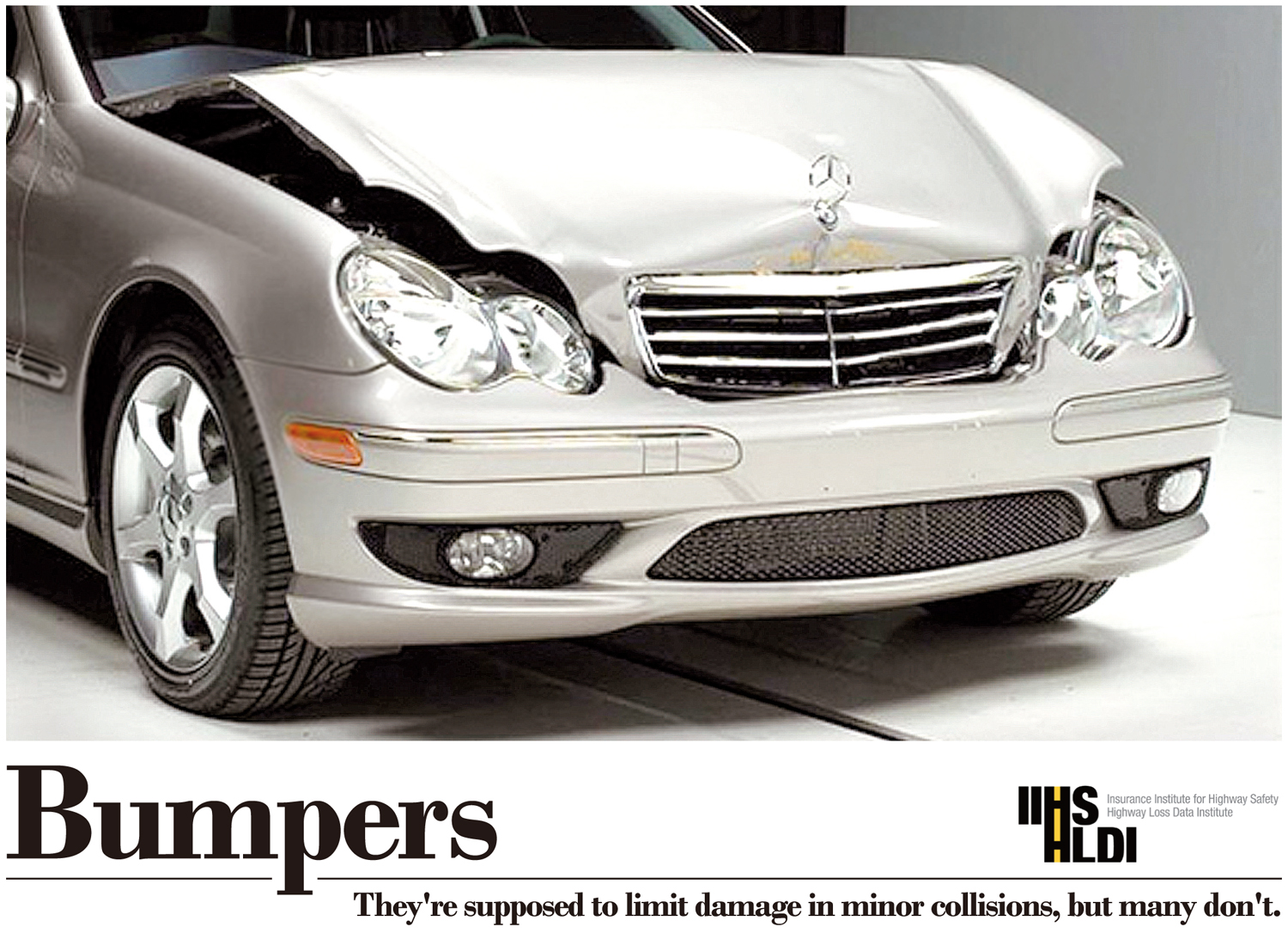
Fender benders are expensive. Bills to repair crash damage can total thousands of dollars, and related insurance claims costs add up, too. That's why it's important to equip passenger vehicles with bumpers that effectively reduce damage in low speed collisions. Better bumpers mean less out of pocket costs for consumers and lower insurance costs, plus they spare drivers the aggravation of dealing with repairs.
Bad bumpers are the norm. Many bumpers aren't high enough or tall enough to take the hit in low speed crashes between SUVs, pickups or other cars. Additionally, many bumpers aren't wide enough to protect the corners of the vehicle. Even when bumpers line up with those on other vehicles reasonably well, many don't stay engaged with the other bumpers or can't absorb the energy of even a minor bump. This means expensive vehicle body parts and lights sustain most of the damage.
Bumpers on pickups, SUVs and vans are exempt from minimum federal performance requirements. Since the 1970s, rules for cars specify a zone for bumper heights and limit the amount of damage that's allowed beyond a bumper system in a low speed crash. Because the rules don't apply to pickups, SUVs or vans, their higher riding bumpers often don't match up with those on cars. Crash energy may bypass the bumpers to damage vehicle bodies and lights.
The Institute's bumper tests assess how well bumpers resist damage in fender benders. Consumers can compare damage amounts from four tests and a weighted average.
The Institute's four tests, front and rear full width impacts at 6 mph and front and rear corner impacts at 3 mph, produce the kinds and amounts of damage that commonly occur in low speed collisions. Each vehicle is run into a steel barrier designed to mimic the design of a car bumper.

To determine the weighted average, the front full and rear full test damages are multiplied by 2 because in the real world, full width impacts occur approximately twice as often as corner impacts and that total is added to the front corner and rear corner test damages. The sum is then divided by 6.